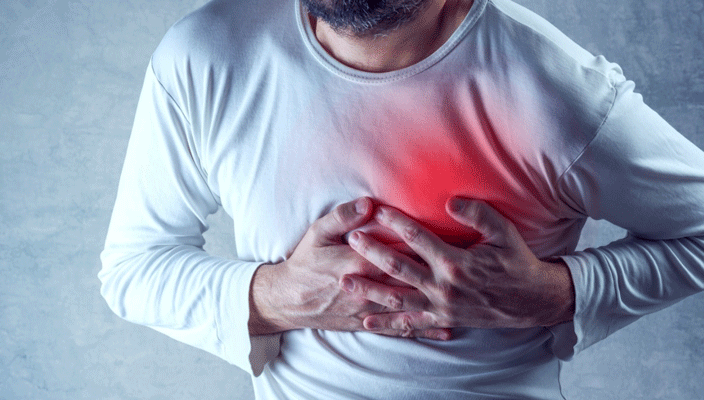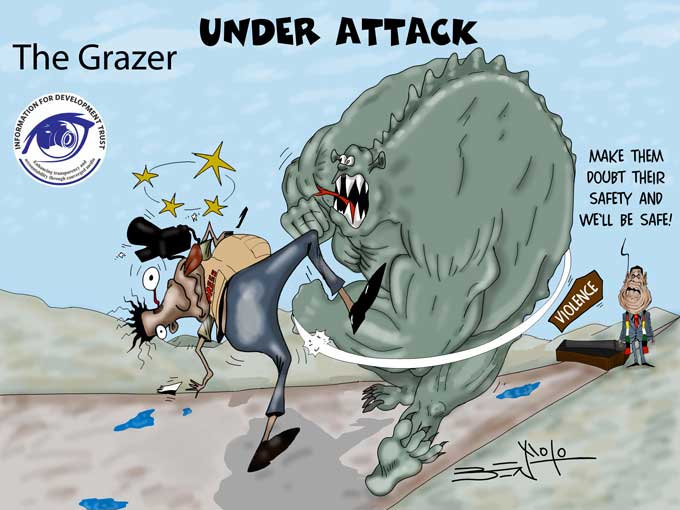
health talk:with Dr Johannes Marisa
Coronavirus recorded the highest number of deaths on October 1, 2020 with 8 922 people having lost their lives. The number of new cases on the same day was 319 406 with India being the worst country in terms of incidence. While Covid-19 can present with chest pains, we should not forget about the other causes of chest pains.
Angina pectoris is a type of chest pain which is caused by reduced blood flow to the heart. Your blood carries oxygen, which your heart muscle needs to survive. When your heart muscle does not get enough oxygen, ischemia might ensue.
The most common cause of reduced blood flow to your heart muscle is coronary artery disease. Your heart arteries can become narrowed by fatty deposits called plaques. This is called atherosclerosis.
Symptoms lIt is often described as squeezing, pressure, heaviness, tightness or pain in your chest. Some people report pain like a vice squeezing their chest or heavy weight lying on their chest.
lPain can be in your arms, back, shoulder especially on the left side.
lShortness of breath.
lSweating.
- Chamisa under fire over US$120K donation
- Mavhunga puts DeMbare into Chibuku quarterfinals
- Pension funds bet on Cabora Bassa oilfields
- Councils defy govt fire tender directive
Keep Reading
The symptoms need to be evaluated immediately by a doctor whether what you have is stable or unstable angina.
Stable angina
lThis is the most common form.
lPain usually comes on exertion but goes away with rest.
lPain lasts a short time, perhaps five minutes or less.
lThe pain can be predicted and is similar to previous types of chest pains you would have.
Unstable angina
lOccurs even at rest
lIs unexpected
lIs usually more severe and lasts longer than stable angina, maybe 30 minutes or longer.
lMay not disappear with rest or angina medication.
lMight signal a heart attack.
NB: Symptoms of angina in women can be different from angina symptoms that occur in men. For example, chest pain is a common symptom in women with angina, but it may not be the only symptom or the most prevalent symptom for women. Other symptoms which may be there are:
lNausea
lShortness of breath
lAbdominal pain
lDiscomfort in the neck, jaw or back
lStabbing pain instead of chest pressure.
Risk factors
The following factors increase your risk of coronary artery disease and angina:
Tobacco use: Chewing tobacco, active and passive smoking can damage the interior walls of arteries, allowing deposits of cholesterol to collect and block blood flow
Diabetes: Diabetes increases the risk of coronary artery disease which leads to angina and heart attacks by speeding up atherosclerosis and increasing your cholesterol levels.
High blood pressure: Over time, high blood pressure damages arteries by accelerating hardening of arteries.
Family history of heart disease: If a family member has coronary artery disease or has had a heart attack, you are at a greater risk of developing angina.
Older age: Men older than 45 and women older than 55 years have a greater risk than younger adults.
Obesity: Obesity is linked with high blood cholesterol levels, high blood pressure and diabetes, all of which increase your risk of angina and heart disease.
If you are overweight, your heart has to work harder to supply blood to the body.
Stress: Can increase your risk of angina and heart attacks. Too much stress as well as anger can also worsen your blood pressure. Surges of some hormones produced during stress can narrow your arteries and worsen angina.
Diagnosis
Diagnosis of angina needs your doctor to take proper history and also do a good physical examination. Risk factors have to be assessed. The following are other investigations:
Electrocardiogram: Electrical signals travel through the heart and they are traced.
Echocardiogram: This uses sound waves to produce images of the heart. Your doctor can use these images to identify angina-related problems, including heart muscle damage due to poor blood flow.
Stress test: Angina is easier to diagnose when your heart is working harder. During a stress test, you exercise by walking on a treadmill or pedalling. Your blood pressure and ECG readings are monitored as you exercise.
Chest X-ray: Images of your heart and lungs are taken. Check for enlarged heart
Coronary angiography: This involves imaging the inside of the heart’s blood vessels. You can see if heart blood vessels are thinning or normal.
Cholesterol checks: Full lipids in the blood. High cholesterol levels can be a very serious cause of such heart pain. Low density cholesterol levels should be taken note of.
Cardiac enzymes: Certain enzymes slowly leak into your blood if your heart has been damaged by a heart attack. Test your blood for Troponin, Creatine Kinase (CK), myoglobin.
Do not take chances with heart pain. Report to your doctor lest you can have a heart attack!
lDr Johannes Marisa is a medical practitioner, a PhD candidate in Education and business who can be accessed on doctormarisa@gmail.com.










